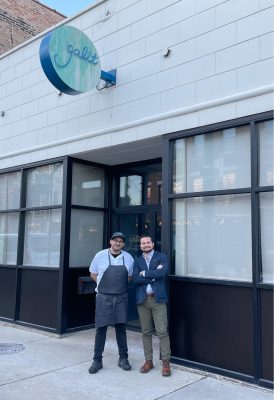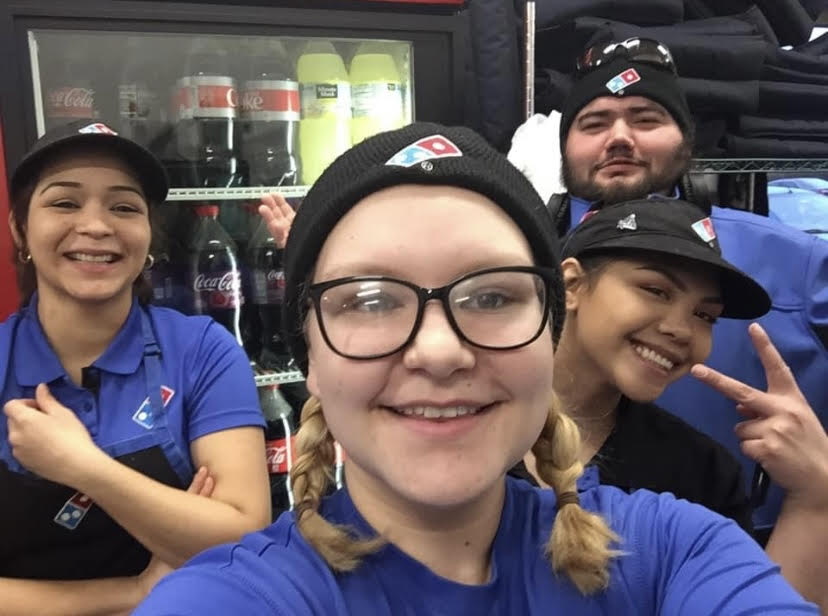Have you noticed how much it costs to put food on the table these days? According to the Consumer Price Index for All Urban Consumers (CPI-U), food prices soared 7.8% in Chicago between January 2021 and January 2022.
Many Chicago consumers are feeling sticker shock due to the dramatic increase in food prices. These increases are also making it more difficult for restaurants to recover from losses they suffered due to the pandemic.
Anne Marie Scheffel, 45, used to eat out twice a week. “I would grab something on the way home for dinner, or sometimes I would take my kids for lunch just to have one-on-one time,” she said. But when tacos at one the restaurants she regularly visited went from $2.75 to more than $4, she decided to change her purchasing habits.
“I’m trying to be more mindful and see where I can get the cheapest prices for certain things,” Scheffel said. She’s also cooking at home more. “I’m actually deciding to try to cut takeout food out of my budget altogether,” she said.
Mae Summers, 19, who moved to Chicago from Sacramento to attend college, is also eating out less often. “Being a student means I don’t have a lot of money,” she said. “It’s definitely harder for me to access restaurant food with the inflation of the prices recently.”
For Summers, this means fewer opportunities to explore new cultures and tastes through the restaurants in Chicago. She also worries that service staff will be hurt if people try to save money by tipping less.
Ravyn Wheeler, 22, admits that higher costs at restaurants have caused her to tip less than she used to. “If the fees are higher for one of my orders, then that leaves me less money to tip, so I either tip lower or don’t tip at all,” Wheeler said. She has also cut back on how she shops when she cooks at home. “I have found myself buying fewer groceries during a grocery trip, and overall in the month, because I am on a budget now. So, I have less money to spend on ‘fun’ foods” like chocolate, Wheeler said.
Ally Lombardo, 21, is trying to find the positives in rising food costs. “Well, it looks like that diet is going to start a little bit sooner than I would have liked,” Lombardo said with a laugh. “Honestly though, I have had to make sure I’m getting the most out of my grocery runs lately with the food situation here.” Working part-time as a waitress at Warehouse Bar and Pizzeria in Lincoln Park, Lombardo says saving money by watching how much food she eats has been difficult. “I shouldn’t feel regret whenever I spend too much at the grocery store or eat too much food for dinner,” Lombardo said. “It’s stressful and unhealthy to live like this.”
When consumers cut back, restaurant owners and workers are affected, too. “As owners of the restaurant, it affects us directly as individuals like everyone else,” said Andres Clavero, 34, the general manager of Galit restaurant in Lincoln Park. “I’m worried about my take-home pay every single day because of my family.”

Zachary Engel, 33, the executive chef at Galit, said he and Clavero have responded to supply chain issues and rising food prices by changing their menu. “We saw the writing on the wall about a year ago,” Engel said. They kept the same suppliers. “We’ve always prioritized who we sourced from, we want people to do well creating those relationships,” Clavero said. But they changed what they bought and removed some expensive dishes from their menu. This has allowed them to continue supporting their staff. “Step one is we have to employ people and we look out for them and their families,” Clavero said.
At Fiya restaurant in Andersonville, house manager Michelle Wheatley, 33, said menu prices have gone up on many items, but not by more than one dollar. “Our food cost is relatively low, as we process all fresh ingredients in house,” Wheatley said. But staff shortages have had a greater impact because the menu is so labor intensive. “Our labor costs have risen tremendously.”
Supply chain problems have caused Fiya to eliminate some items from the menu, too. “That can be an unhappy surprise for the customer to be out of one thing this day and something else the next,” she said. “No one likes inconsistency, but our customers have been extraordinarily patient with us and continue to return.” Fiya has also committed to providing for its staff, who are facing rising costs like all consumers. “Necessarily, inflation means our employees’ paychecks may not go as far as they used to at the grocery or the gas pump,” Wheatley said. “But as a growing restaurant, pay for back of house has steadily risen, and front of house pay is competitive.”

Not all restaurants are feeling the pinch, however. Michelle Harper, 21, said Honey Berry Café in the South Loop has not had to increase menu prices. “Nothing has drastically changed here due to inflation,” she said. “Tipping has even increased.”
Kevin Sylwester, professor of economics at Southern Illinois University, suggests looking at inflation as part of a larger picture that isn’t as bad. “I don’t want to appear out of touch,” he said. “Rising food and gas prices are a problem, especially for low-income families but other economic indicators look strong.” Fourth quarter GDP numbers have begun rising, he said, and in January, the job markets report showed a lot of strength.
Additional reporting by: Shayla Alcorn, Tiffany Barney, Tiffini Funches, Natalie Pretelt, Taylor Priola and Hannah Trimble























Be First to Comment